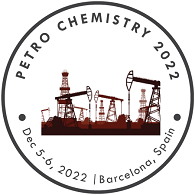Drilling & Well Operations
One of the remarkable accomplishments of the petroleum engineering technology has been the development of technology that allows for drilling wells offshore to access additional energy resources. The basic offshore wellbore construction process is not significantly different than the rotary drilling process used for land based drilling. The main differences are the type drilling rig and modified methods used to carry out the operations in a more complex situation. For offshore drilling a Mechanical Properties of stable offshore platform or floating vessel from which to drill must be provided. These range from permanent offshore fixed or floating platforms to temporary bottom-supported or floating drilling vessels. Drilling offshore began near the turn of the 20th century when shallow water fixed platforms were used to access offshore reservoirs. But offshore drilling and production did not really develop to be widely viable until after 1947 when the first offshore well was drilled at a location completely out of site of land. Since then, offshore production, particularly in the US Gulf of Mexico, has resulted in the discovery and delivery of a significant contribution to the total US bioenergy production, with about 35% of crude oil production in the US coming from offshore developments. Offshore drilling has considerably higher costs than for land-based drilling, depending on water depth and well complexity, which requires a larger volume of hydrocarbons reservoir that can be economically justified.
Related Conference of Drilling & Well Operations
Drilling & Well Operations Conference Speakers
Recommended Sessions
- Chemical Applications
- Coal and Natural Gas
- Drilling & Well Operations
- Enhanced Oil & Gas Recovery
- Gas Supply & Gas Technology
- Geology & Exploration
- Health, Safety, and Environment
- Modelling and Simulation
- Onshore/Offshore Support
- Petroleum Exploration & Field Management
- Pipelines & Transportation
- Process Chemistry & Technology
- Process Technology
- Production Technology and Separation Techniques
- Renewable Energy and Feedstock
- Reservoir Characterisation
- Sustainable energy
- Unconventional Resources
- Upstream/Downstream & Midstream Integration

